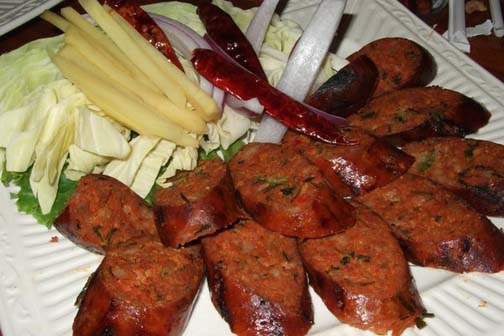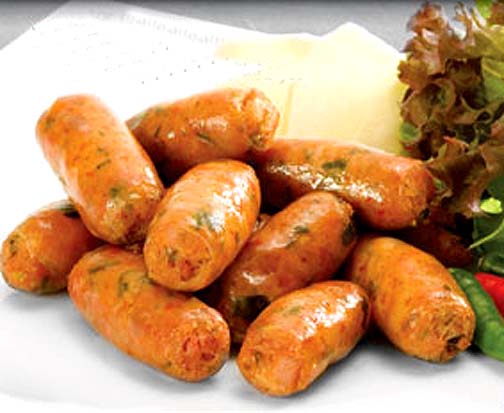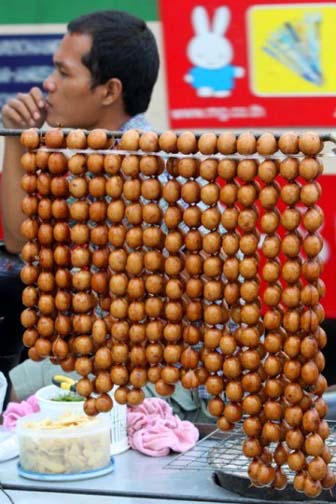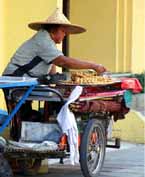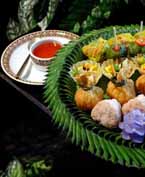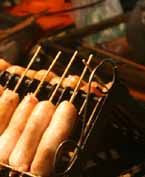I love Thailand. Its postcard-picture perfect beaches, its cool, fog-draped mountains and towering other-worldly limestone peaks, the hustle and bustle of Bangkok, the laid-back I’m-finally-on-holiday ambiance of Chiang Mai, it’s never-ending display of gold encrusted gods in temples, shrines, and even on street corners, the warm smiles of strangers that remind you why the country deserves its nickname . . . what’s not to like? And then there are the men of Thailand too. Slim boys with an androgenous appeal, hunky body builders oozing masculinity, the boy-next-door types who make you wish you’d grown up in a different neighborhood, all flashing those glorious Thai smiles in your direction. How can you not love Thailand?
First-time visitors to the Land of Smiles walk away mesmerized by the country’s beauty, taken with its richly exotic appeal, and often bewildered by its quirky customs. Frequent visitors begin to hone in on the country’s faults, as amusing as they often are. But ask either what they like most about Thailand, and sooner than later the country’s rich and diverse smorgasbord of delectable treats takes center stage. Like Thailand itself, when it comes to Thai food there is both the familiar and exotic, the mundane and quirkily odd. From simple streetside food carts offerings to the elegantly presented dishes of Royal Thai Cuisine, Thailand has something for every taste bud. And more often than not, your mouth will be wowed.
Thais are notoriously proud of their country and its people. Xenophobic to a fault, they are also both suspicious of and enamored with western culture. That paradox often provides a good laugh among visitors. Almost as often as it results in a good deal of head scratching. And no where does the odd Thai version of a familiar western concept arise as often as it does at the dinner table. Kipling wrote the East is East, and West is West, and never the twain shall meet. It’s a shame the chefs in Thailand never read English literature. Fusion foods are one thing. Sometime even a very good thing. But when Thai chefs attempt to cook for the western palate, they usually get it wrong. Not that you can blame them. Farang are a strange breed. But with the vast array of delicious Thai dishes available, Thais would do better to stick with what they know. Case in point: those small hot dogs the locals try to pas off as sausage at breakfast.
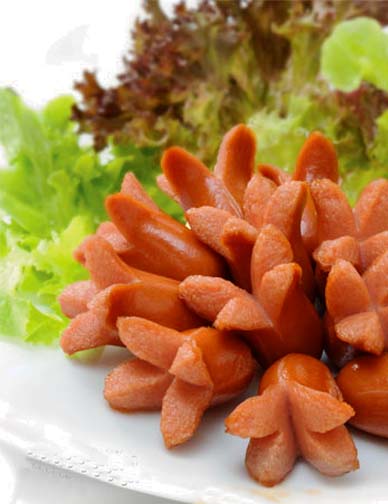
The popularity of ladyboys in Thailand make sense when you consider what they are willing to do to hot dogs.
You can’t be a fan of irony and not at least get a small chuckle from the tiny sausages that the locals feel are de rigueur for a farang-style breakfast. Before 10 a.m. what passes for a sausage in Thailand are more ubiquitous than 7/11s. And often serve as a quick visual reminder of the local lad you paid to spend the previous night with you. Anywhere else in the world they’d be called hot dogs, albeit small ones at hat. In Thailand they are called Farang food. Even if farang have never encountered them back home.
The first time you encounter one at a hotel’s breakfast buffet, often floating in the tepid water that fills a chafing dish not doing its job, it’s a WTF? moment. The accompanying sign proclaims they are sausages – at times even going as far as to identify whether they are pork, beef, or chicken based, as though what they are actually made from has anything to do with what was once a living, breathing creature. But that’s meat by-products for you. If you had half a brain, or cared about your health, you’d give them a pass anywhere in the world. But as a Westerner you’re familiar with chowing down on the parts of an animal that should, in all rights, be discarded, or, at best, used to produce pet food. And if you have not yet seen what a cow looks like in Thailand, those vaguely familiar shapes seem like a worthy addition to your breakfast plate.
A teasing nibble tells you that unlike with the wide assortment of fried and sauteed bugs the locals all enjoy, your breakfast sausage is safe. It’s also bland. Almost tasteless. Which may not be a bad thing. Thinking that maybe the chicken version might be better, you give one a try. Nope. Just as lacking in flavor, it’s more about color than origin. Kinda like their version of orange juice.
At least if you are truly blessed you’re not dining on a served plate featuring a heaping spoonful of canned pork and beans. Those damn British should never have been allowed to influence the colonized world. At least in those country subjugated by the French, good bread still exists as a nod to their days of rule. Mushy peas, on the other hand, are a crime against humanity. But then karma being what it is, the Indian take-away joints – showing they learned their lesson of how to abuse a chafing dish as well – that abound on London’s street corners provide the bitch slap those Brits had coming to them. But why the rest of us have to be subjected to what is nothing more than a hot dog, no matter how intricately carved, is beyond me. You’re almost better off booking a hotel room that doesn’t include a free breakfast.
But there’s the rub. Breakfast is a tradition among Westerners, with a very specific menu suitable for morning meals. In Thailand what is eaten for breakfast is often not that much different than the countless small meals they eat throughout the day. As a concept, the western breakfast in Thailand doesn’t exist. At least not in the version you are familiar with. You could say the hell with it and just head for the closest Dunkin’ Donuts. But if international fast food is your game, you’d be much better off making a beeline for the nearest Black Canyon Coffee as I often do. Yup, their prices are ridiculously high. But while their coffee is acceptable at best, they have a version of the Northern Thailand sausage staple, Sai Ua, that is to die for.
Despite what they do to hot dogs at hotel breakfasts, Thais have a love affair with sausage. They are an efficient meal; they keep meat from spoiling, use up less-desirable parts of an animal, and disguise the flavor of meat that isn’t quite fresh. And they’re cheap too. Pork is the most popular meat by-product used as filling, and ingredients like garlic, chilies, red curry paste, and fresh herbs make Thai sausages taste much more interesting than many American or European types. And you can find them everywhere.
Sai Ua, the version you’ll find in Chiang Mai (though it’s also quite popular throughout the country) is usually displayed in a thick coil, several feet long, that leaves little question of the pig intestine used as its casing. Every cook has his own version, but most include Kaffir leaves, red curry paste, lemon grass, tumeric, and lots of pork fat. Yummy! Once stuffed, Sai Ua are left to ferment for a few hours or an entire day before they’re cooked, giving them a distinctly sour taste. It is usually served in fairly thick slices. Black Canyon’s version is heavy on pepper and flavorful spices. And are just the thing your mouth needs to wake it up in the morning.
As popular is the traditional Issan version of sausage, Sai Grok. The main ingredients for Sai grok are minced pork, sticky rice, garlic, more garlic, pepper, salt, and a bit more garlic. Again, every maker has his own version, but with sai grok the rice is pivotal – its primary function is to act as a catalyst for fermentation to get the taste of soured meat. Which may not sound appetizing, but once you’ve tried one you’ll be hooked.
More familiar to Bangkok visitors is the other traditional sausage from the northeastern part of Thailand, Nam. Like with Sai Grok the main ingredient of this sausage is cooked jasmine rice for a little fermentation Nam usually has less garlic than Sai Grok, and takes on a pinkish hue when barbecued, which is the only way to cook it. The sausage links and balls you most often see on the streets of Bangkok are usually a version of Nam, with the cheaper versions heavy on rice and the better sausage mostly made of pork – or what can still be legally called pork. You may not be able to tell the difference (which the food car owner is counting on) but any local will know immediately which is which. Your best bet, as with any food cart, is to buy from where all the locals are picking up their dinner.
The next time you’re confronted with a tiny hot dog masquerading as sausage at breakfast in Thailand, take a page from Nancy Reagan’s play book and just say no. Just outside the hotel’s door you can find sausage that will make your mouth water, at a very cheap price. And while you are then enjoying your morning meal you can thank the gods the Thais have not yet heard of corn dogs. Because Americans too have inflicted some horrendous culinary mistakes on the world.
| Related Posts You Might Enjoy: | ||


